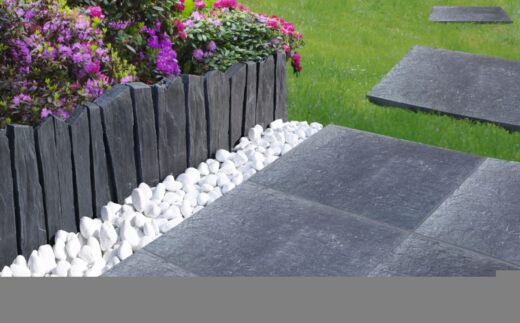
A garden edging is always useful to delimit paths and lawns, while highlighting plantings. So how do you go about installing a garden edging?
Ardoisière garden edging by PIERRA
Choice of materials
To make a garden edging, you’ll need to install a solid structure on its boundary line. Several materials are available for this purpose. The most commonly used materials are brick, wire mesh or stone, as well as variations such as concrete pavers. But you can also use branches to make a garden border, or use wood. The key is to choose a material that is suitable for the outdoor environment, and that is resistant to weather conditions such as sunlight, humidity, frost, fungus and mildew, and so on. At this point, it’s worth noting that wood composite can be more effective than natural wood, as it displays all the characteristics of excellent weather resistance. What’s more, it’s an environmentally-friendly material, derived in part from recycled wood waste. If you are interested in learning more about this material,
please click here
A foolproof installation technique
Sometimes, the installation of garden edging can be complex. In reality, all you need to do is follow a simple technique: before laying the materials, you’ll need to clearly define the border. You’ll need stakes and ropes. Then all you have to do is plant the elements that make up the border, following the line formed by the ropes. If the border is to be made of wood planks, wood composites or branches, they should be planted in the ground at one-third of their height. If concrete paving stones are used, they simply need to be firmly anchored two or three centimetres into the ground. Once all the edging has been laid, simply remove the various stakes and ropes.
If you’d like to preview the integration of a garden edging in your home, take a free test with our garden design site: 
